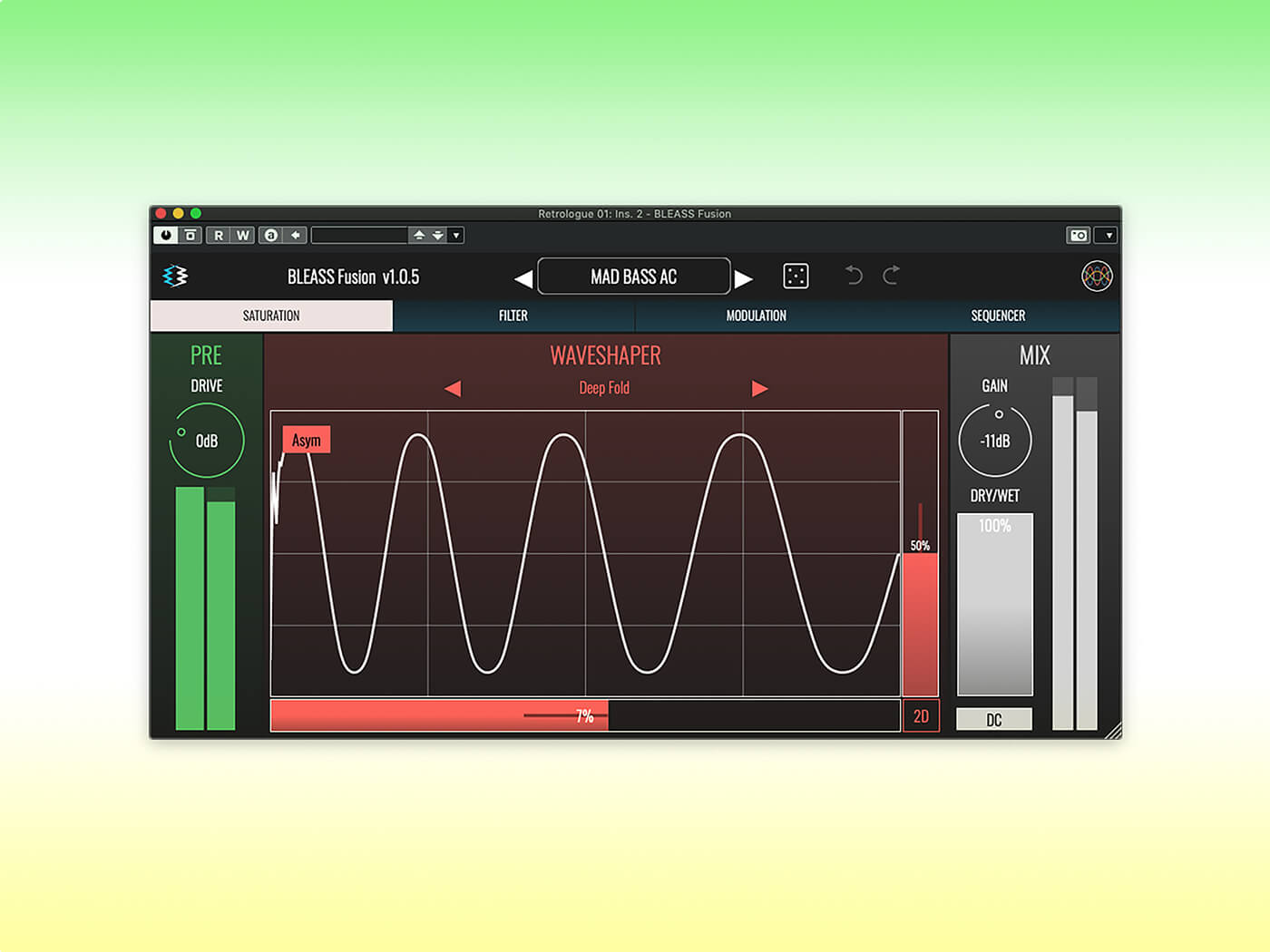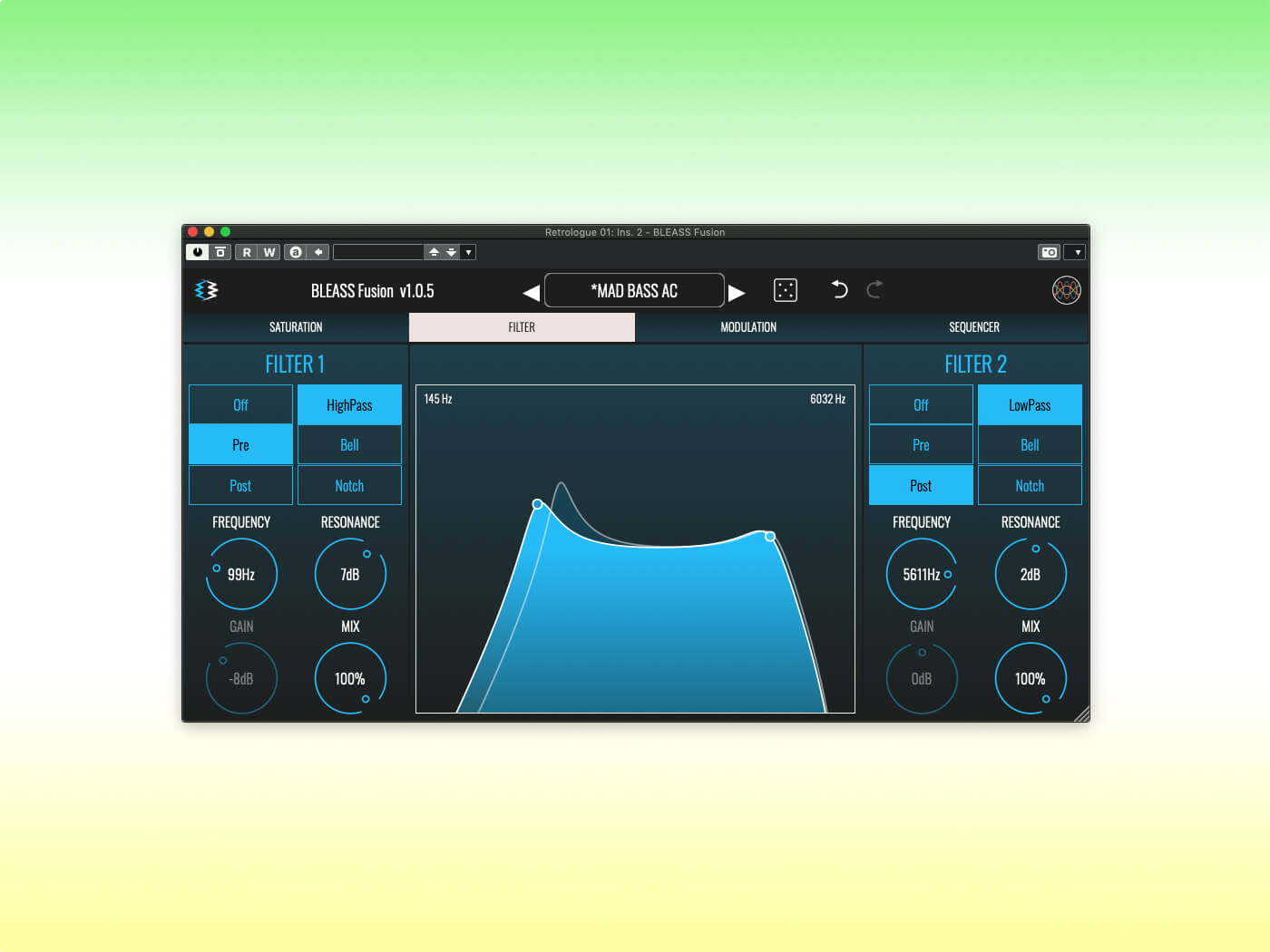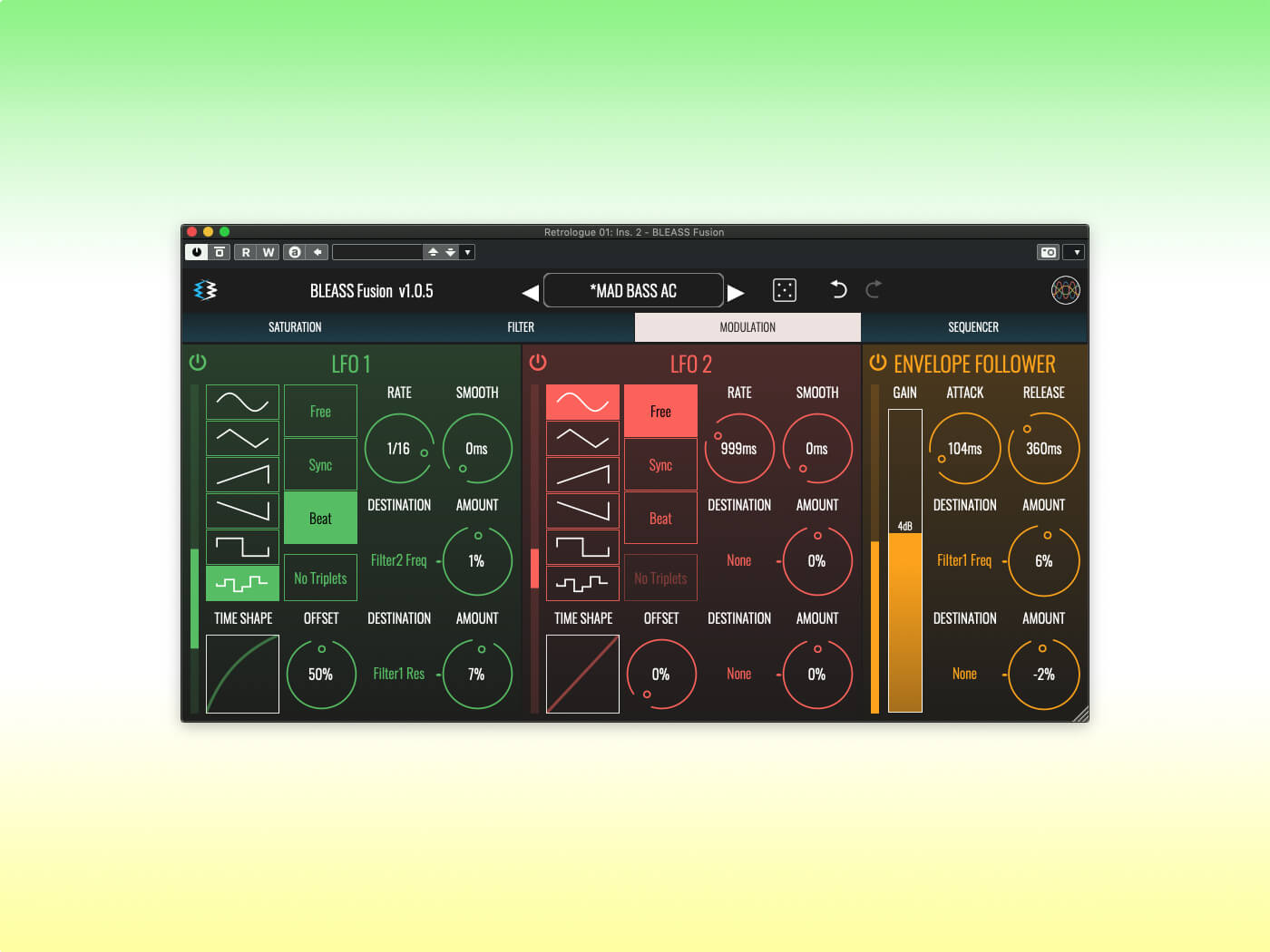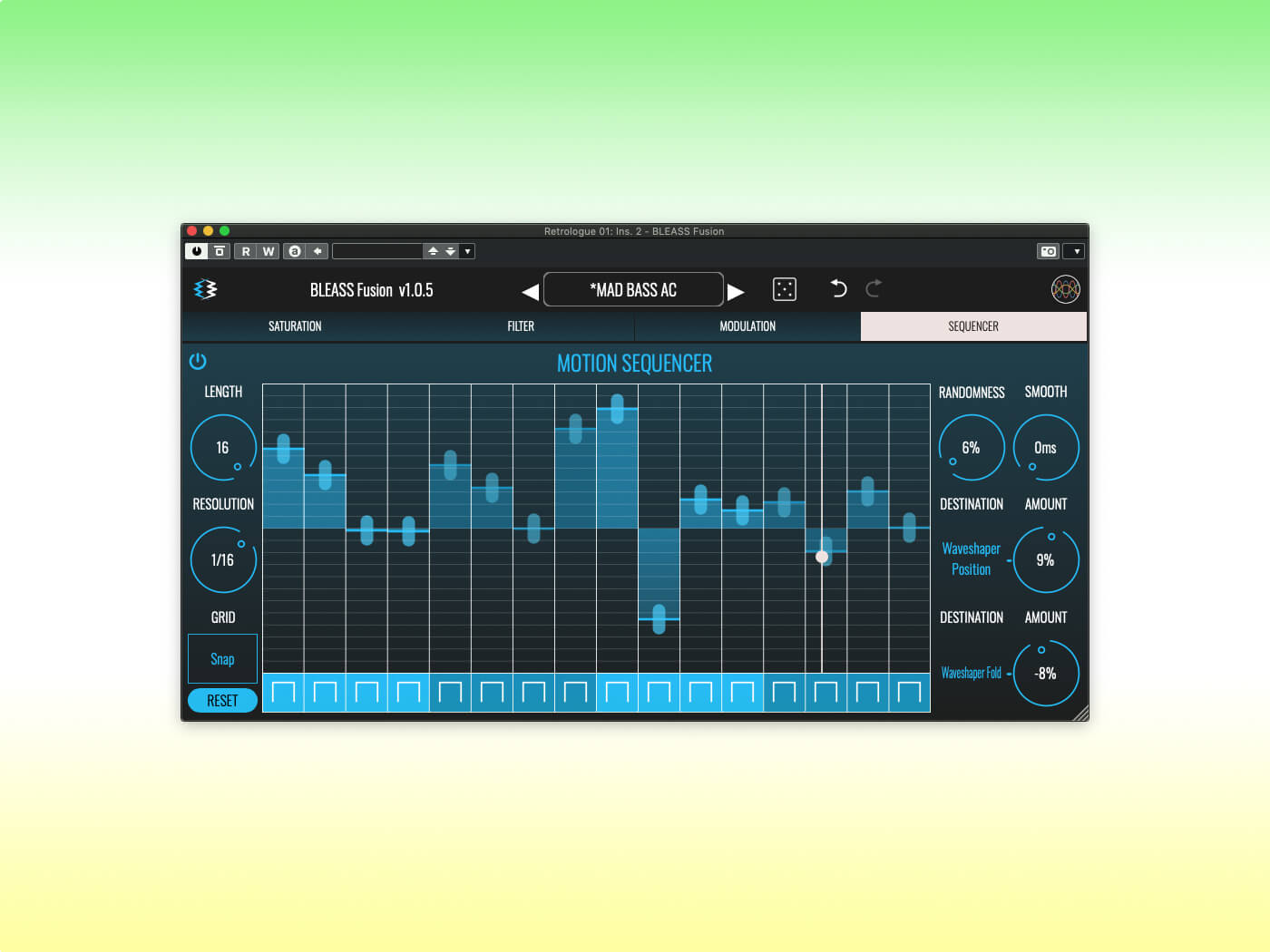BLEASS Fusion’s wavetables open up a near-limitless world of distortion for $20
There are many different degrees of audio distortion, ranging from supremely subtle to devastatingly destructive – and within that range exists an infinite potential for tone and character variation. Most plugins therefore hone in on a particular flavour of distortion, such as tape saturation, valve overdrive, or bit crushing.
Wavetable waveshaping
Fusion uses waveshaper processing to distort audio. Waveshaping works by applying a mathematical shaping function to a source signal to reshape (distort) it. That shaping function is usually derived from a static waveform, with the shape of that waveform determining the intensity, tone and character of the resulting distortion.
Fusion is not unusual in using waveshaping for distortion; many plugins use it to emulate the sound of different types of analogue distortion, and some even let you choose from a selection of waveforms to vary the sound of their effect. But Fusion has a unique quirk that takes this concept to a new level: it sources its shaping waveforms from a selection of 58 wavetables.
BLEASS already developed a powerful wavetable engine for its acclaimed Megalit synth, and it has repurposed the same engine for use in Fusion. Like any wavetable engine, BLEASS’ design allows you to extract different waveforms from the wavetable by adjusting the wavetable position.
When applied to the world of waveshaping, this means you can, for example, morph a distortion from a gentle soft clipping to an intense tube saturation, so long as you have a suitable wavetable.

The engine also features wavetable folding, a technique that compresses or stretches the wavetable’s waveforms either symmetrically around the centre point or asymmetrically from beginning to end.
When operating symmetrically, this tends to impact the intensity of the distortion, with lower fold values equating to more intense distortions. In asymmetric mode, the impact tends to be more radical and unpredictable. All told, this adds completely new dimensions to the different distortion characters that can be teased out from any of the included wavetables, or from your own custom wavetables, which Fusion is able to import.

Distorting signals can lead to some very loud levels, and one of Fusion’s few shortcomings is its lack of a limiter. This can surprise you with sudden intense blasts of sound when loading presets and adjusting settings. The master output gain isn’t stored and recalled with presets, though, so you can dial in some protective headroom when needed.
Shaping the waveshaper
You can shape the base distortion tones with a pair of resonant multimode filters. The first offers high-pass, bell and notch modes, while the second filter replaces the high-pass option with a low-pass.

Each filter can be switched to operate pre or post the waveshaper’s effect.
In the pre position, a filter allows particular frequencies to be driven harder (or softer) into the waveshaper, which significantly impacts the tone and character of the resulting distortion.
In the post position, the filters shape the spectrum of the distorted signal, removing low-end woolliness and high-end fizz, for example. Further tonal variations are possible thanks to each filter’s independent input gains and wet/dry mix controls.
The filters sport the standard BLEASS design, with an interactive visualiser that lets you control the cutoff and resonance of both bands with a drag of the mouse or finger. This is very intuitive, especially when using the iOS version of the plugin, but it can feel a little bit inexact too. We were pleased, therefore, to see that BLEASS has added cutoff and resonance dials to its standard filter design as an alternative, more accurate, method of setting filter parameters.
Modulated movement
Having an apparently limitless pool of different distortions at your fingertips is powerful, but a sound can quickly become boring if it’s static and unchanging. This is where Fusion’s various modulators come in handy.
The pair of advanced LFOs which, like the wavetable engine, are taken from Megalit, allow you to create surprisingly complex modulation patterns. This is thanks to their Time Shape and Smoothing parameters, which can run freely or be synced to the host DAW. For dynamic modulations that respond to transients within the input signal, there’s also a simple envelope follower.
The final modulator is a built-in pattern sequencer. Patterns can consist of up to 16 steps in length, and each step can produce either a static modulation value, or a ramping one that changes over the duration of the step.

Fusion’s sequencer only syncs to the host DAW – it can’t be induced to free-wheel – but it can add a randomising factor to the values it creates, and automatically smooth the changes between values. What we particularly enjoy here is how easy it is to create really juicy, rhythmic effects by using the sequencer to drive the wavetable position and fold, and/or the filter cutoffs.
You can route each modulator to any two destination parameters with varying strength and polarity. This does sometimes feel limited though, especially when it comes to the pattern sequencer which just cries out to be mapped all over the plugin. On the other hand, this limitation helps minimise the plugin’s resource usage (a common BLEASS feature) and ensures patches never become overly complicated.

The full gamut
It’s only when you’re presented with so many different characters of distortion – and so many ways of tweaking, adjusting and evolving them – all in one place, that you really start to appreciate just how vast and deep the world of distortion truly is.
The most remarkable thing about BLEASS Fusion is that it can run this entire distortion gamut, from smooth valve saturation to hard-edged transistor trashiness, from subtle colouration to full-on frequency frying, and from the lightest sprinkle of fizz to the most depraved depths of sonic destruction. And you get all of this for less than $20!
Key features
- Waveshaping distortion plugin for AAX, AU, AUv3 and VST hosts
- Desktop and iOS versions; Apple Silicon native
- 58 included wavetables plus custom wavetable import
- 2 multi-mode filters
- 2 LFO, envelope follower and sequencer modulators
- Low system resource footprint
See the product
More from BLEASS